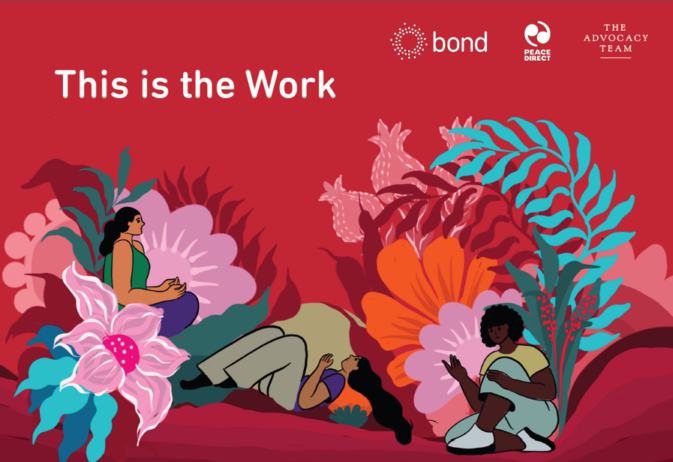5 ways development consortia have adapted to Covid-19
Amid the Covid-19 crisis, consortia of development organisations have faced many challenges: increased marginalisation of the communities they serve, shifting focus of key stakeholders, and abrupt changes to planned activities and ways of working.
But they have found different ways to adapt to ensure progress, maintain relevance, and deliver impact.
As part of the Learning from Consortia programme, we reviewed how some of the 13 UK Aid Connect consortia have responded the crisis. Here are five key ways they have adapted due to Covid-19.
1. Generating knowledge on the impact of Covid-19 on communities
The rapid spread of Covid-19 around the world led to equally rapid changes in the realities and needs of the consortia’s target communities. To understand the impact, consortia pivoted to include Covid-19 in existing research and analysis, and initiated new research projects.
The Development Alternative, a consortium focused on civil society effectiveness, pivoted their research and feedback activities to understand how their target communities were affected by, responding to, and adapting to Covid-19. Similarly, the Coalition for Religious Equality and Inclusive Development (CREID) analysed how communities marginalised by both poverty and religious inequality have been impacted by the pandemic.
Generating knowledge on how Covid-19 impacts target communities and their related needs has enabled consortia to identify potential interventions and adaptations, as well as to determine key programme priorities going forward.
2. Responding to the immediate needs of communities
Consortia extended existing activities and initiated new activities to address immediate needs of target communities. Examples include provision of hygiene kits and pivoting from working on hate speech, to working with local people to provide access to clean water as in the case of CREID.
Some consortia had to rapidly adapt to worsening conditions for their target communities. Research coming out of the Partnership to End Child Exploitation (PACE)* consortium for example, found that Covid-19 was translating into greater numbers of children working at mining sites. Their adaptations included putting in place new community-based child-protection networks around mining sites.
Subscribe to our newsletter
Our weekly email newsletter, Network News, is an indispensable weekly digest of the latest updates on funding, jobs, resources, news and learning opportunities in the international development sector.
Get Network NewsBeing flexible to the needs of target communities has not only helped address the most pressing concerns surfaced by Covid-19 but has also enabled consortia to strengthen relationships on the ground.
3. Raising awareness about and within communities
In some cases, Covid-19 has shifted key stakeholder focus away from the issues being addressed by consortia, and responses to the crisis have further marginalised target communities. Consortia have had to find ways to amplify the voices of target communities in the context of the pandemic and ensure these populations are included in Covid-19 communication and prevention.
Examples include working with parliamentarians and other leaders to increase awareness of the impact on target communities and their associated needs, as well as working with media to cover the impact on these populations in their reporting. Consortia have also taken on new roles to address gaps in Covid-19 awareness and prevention among target communities. Adaptations range from including Covid-19 messages into existing activities, to supporting local stakeholders to improve communications, and pivoting existing activities to focus on Covid-19 communications.
Smart Peace, a consortium focused on conflict prevention and peaceful change, convened diverse stakeholders in conflict zones to discuss Covid-19 prevention and responses. They found that in some cases Covid-19 provided a neutral topic of conversation for conflicting groups to coalesce around and build trust. This helped facilitate humanitarian access and laid the groundwork for formal dialogues and future mediation efforts. For Smart Peace, the high degree of flexibility built into their programme design enabled them to think broadly and creatively about how to adapt to Covid-19.
4. Reimagining how to work with communities
Covid-19 has impacted the way consortia work with target communities. In-person activities such as community events, training and workshops, and research have had to be put on hold or reimagined. In some cases, this has meant pivoting to more remote or online media, such as radio, TV, and mobile loudspeakers, as well as digital technologies such as ZOOM, WhatsApp, and Facebook.
Where engagements on the ground persist, they have been reimagined to include smaller groups with social distancing, face masks, and handwashing. Other adaptations include house-to-house data gathering instead of whole community sessions and use of focal points within each community for communication and reporting.
Some consortia feel smaller group and virtual interactions are less rich, and online media can pose connectivity challenges. But many have reported positive outcomes from the adaptations, such as increased engagement and efficiency. Some consortia are trying different models to see which works best, and others are already planning to scale up new approaches.
5. Transitioning to new ways of working among consortia members
Consortia have also adapted to Covid-19 in the way they work among themselves. With health concerns, lock downs, and travel restrictions, much work has transitioned online. From meetings and working groups to peer reviews and workshops, consortium members have had to interact virtually, often while juggling family needs.
Many consortia reported that online working has not only increased value for money, but also inclusivity, engagement, and equality. In essence, it has created a more level playing field. Some also reported that because the line between work and home has become blurred, more empathy and stronger relationships have emerged. Others reported that the crisis itself has galvanised conversations and increased emphasis on sharing and learning from each other.
What drives consortia’s adaptability?
If there is a silver lining to the Covid-19 cloud, it is that it has thrust consortia into creative exploration of new approaches that may have benefits over existing methods. But what enables or hinders creative exploration and fruitful innovation?
The ability and need to pivot may depend on the flexibility built into a consortium, but it may also depend on the context and the specific stakeholders and partners involved. As we move into our second year of this global pandemic, we will explore this question further through a deeper dive into consortia adaptations and innovations, and how they have been enabled or hindered by the consortium model.
* The PACE consortium is registered with the FCDO as ‘Effective approaches to ending the worst forms of child labour in fragile contexts (EAPEC)’
The Learning from Consortia programme is led by Bond and The Partnering Initiative to share learning and find innovative solutions to complex development challenges.
Category
News & Views



